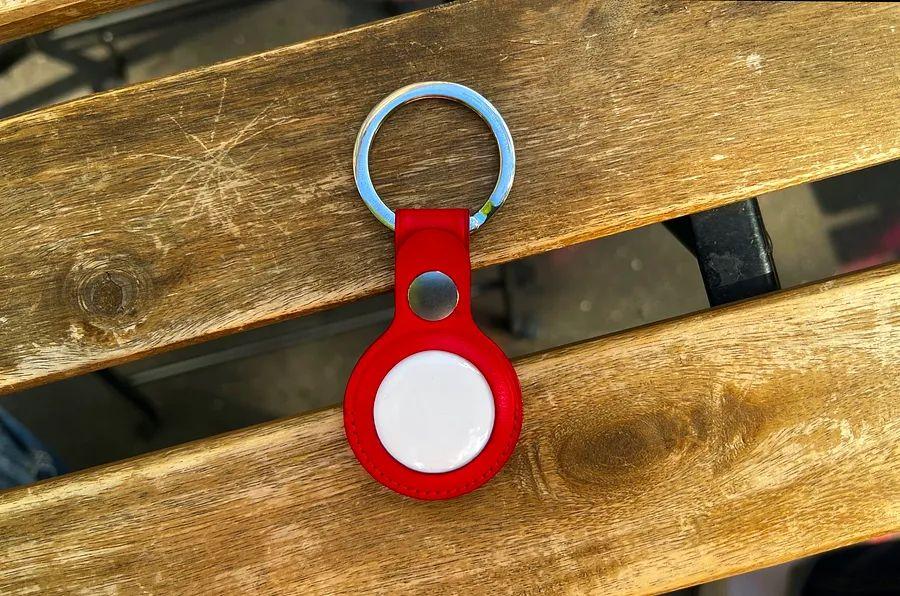Experiencing Apple’s AirTags for Tracking Luggage

Editors' note: This article has been updated with the latest information. Availability was confirmed as of 5:00 p.m. ET on June 10.
I tend to misplace my belongings more often than I’d like.
I frequently find myself searching for my phone or other easily lost items (like my Lululemon fanny pack that carries my wallet and car key) right when I need them the most. However, since I started using Apple AirTags to keep track of my things, these moments have become less frequent.
I've always appreciated the Find My iPhone feature in iCloud, as it allows me to locate my phone using another device, such as a MacBook Air.
I’ve experimented with other Bluetooth trackers, like Tile, in the past. I've been using Tiles since 2016 and have even given them as gifts. However, their app can feel a bit cumbersome, and finding a lost item can take considerably longer due to its limited network.
So, when Apple unveiled AirTags during a virtual press event in 2021, I quickly ordered a four-pack as soon as they became available. Since then, I've used them on numerous trips to keep tabs on my luggage, fanny pack, wallet, and even my husband's golf clubs. Few experiences are worse than showing up for a guy's golf trip without your clubs.
Additionally, Apple AirTags (four-pack) are currently discounted on Amazon for $78.99 (down from the usual $99).
Here’s what it’s really like to use AirTags while traveling.
Apple's inaugural tracking device
 BECKY BLAINE/Dinogo
BECKY BLAINE/DinogoTo provide some context, AirTag is Apple's newest Bluetooth tracking gadget. You can attach it to any item you own, and it will quietly monitor the item's location whenever it connects with a nearby Apple device. This can include your own iPhone or someone else's iPhone or iPad — the AirTag doesn't have a cellular or GPS chip built in.
This system is effective due to the vast number of iOS devices in circulation. If you misplace your fanny pack at the airport or in a public setting, it's likely that someone with an iPhone will be nearby. When your keys are linked to an AirTag, it will use that iPhone to ping its location and send the information back to you. Importantly, no personal data is shared during this process.
You can track your AirTags through the Find My app alongside your iOS devices. Each AirTag features a small internal speaker, allowing you to use sound to locate your belongings at home, similar to how you would play a sound on your phone using Find My iPhone.
 FIND MY APP
FIND MY APPAdditionally, when you're near one of your AirTags, you can utilize the "Find Nearby" feature to help locate it. This is particularly useful for finding misplaced items at home or in a hotel room, as it will indicate how close you are and the direction to walk in.
 APPLE
APPLEOther NFC-enabled devices can also scan your AirTags to access your contact information, functioning like a digital luggage tag. If you misplace an item, you can mark it as lost in Apple's Find My app. When someone finds your AirTag, they can hold it up to their NFC-capable device to receive your contact details.
When you mark an AirTag as lost, it also stops others from linking it to their Apple ID. You'll receive a notification if someone finds your AirTag and scans it with their mobile device.
 APPLE
APPLEOne of the greatest advantages of AirTags is their affordability: you can snag one for just $29, or opt for a four-pack for $79 on Amazon (originally priced at $99 at launch). The four-pack offers the best value, essentially giving you one for free when you buy three.
Plus, there are no monthly subscription fees or data plans to manage. Instead, you tap into the vast network of existing iOS devices worldwide to help locate your missing items.
There's also no need to recharge your AirTags, as they run on a replaceable coin-cell battery that typically lasts around a year. You can easily find these batteries at convenience stores or hardware shops for replacement.
This was a significant drawback of the original Tiles; they required replacement every 12 to 18 months and had non-replaceable batteries. Fortunately, this issue has been resolved in the newer versions.
AirTag design and accessories
 BECKY BLAINE/Dinogo
BECKY BLAINE/DinogoAirTags feature a sleek and straightforward design, resembling a polished white button with the Apple logo on the reverse side. They're roughly the size of a half-dollar coin, and I've placed one next to the Apple USB plug for comparison.
One drawback of the design is the absence of a keyring or lanyard attachment, meaning you'll likely need additional accessories unless you plan to tuck it into a pocket in your luggage or backpack. Apple offers its own range of AirTag accessories, including keychains and loops for luggage tags, available at your local Apple Store or on Amazon. They've even collaborated with Hermès to create luxurious holders.

Regrettably, these accessories come with a hefty price tag. Silicone Apple Loops start at $29, while leather key rings begin at $35. There are also third-party options available, but it's advisable to choose high-quality ones to prevent losing an AirTag if it's attached to your bag.
My experience using AirTags while traveling
 ANDREW KUNESH/Dinogo
ANDREW KUNESH/DinogoI've taken several trips with my AirTags. I always keep one tucked in my Lululemon fanny pack and another in each of my Away suitcases. So far, I haven't misplaced any of these items, but it's reassuring to have their location readily available no matter where I am.
I'm typically #TeamCarryon at TPG, but when I do need to check a bag, attaching an AirTag to my Away suitcase is a smart strategy in case my bags get lost or delayed during transit. There's a good chance they'll connect with an iOS device at some point, which can assist in locating my bag if needed.
I typically fly with American Airlines, and while they offer bag tracking through their app, I appreciate the added reassurance of being able to see exactly where my luggage is.


On a recent trip, my husband's golf bag didn’t get offloaded when we arrived in Charlotte. Fortunately, he could show the baggage claim agent where his AirTag was indicating the bag's location, prompting them to send someone to retrieve his clubs. Without that AirTag, his golf trip could have been significantly impacted.
 APPLE
APPLEThis situation proved that AirTags — along with the extensive network of iOS devices — can indeed assist in finding misplaced belongings.
Final thoughts
At just $29 each, AirTags are among Apple's most budget-friendly products. They can also help you avoid costly losses.
Additionally, you can currently grab a four-pack for only $79.
Apple faces competition from Tile, which has offered a similar product for years. However, it lacks the extensive network of iOS devices that can assist in locating your lost items. The likelihood of your misplaced bag being near an iPhone is significantly greater than being close to a smartphone using the Tile app.
Additionally, the ability to ping items that are easy to misplace — like keys, headphones, or a small bag — as well as your luggage, provides great peace of mind, especially considering the unpredictability of travel these days.
Further reporting by Andrew Kunesh

1

2

3

4

5
Evaluation :
5/5